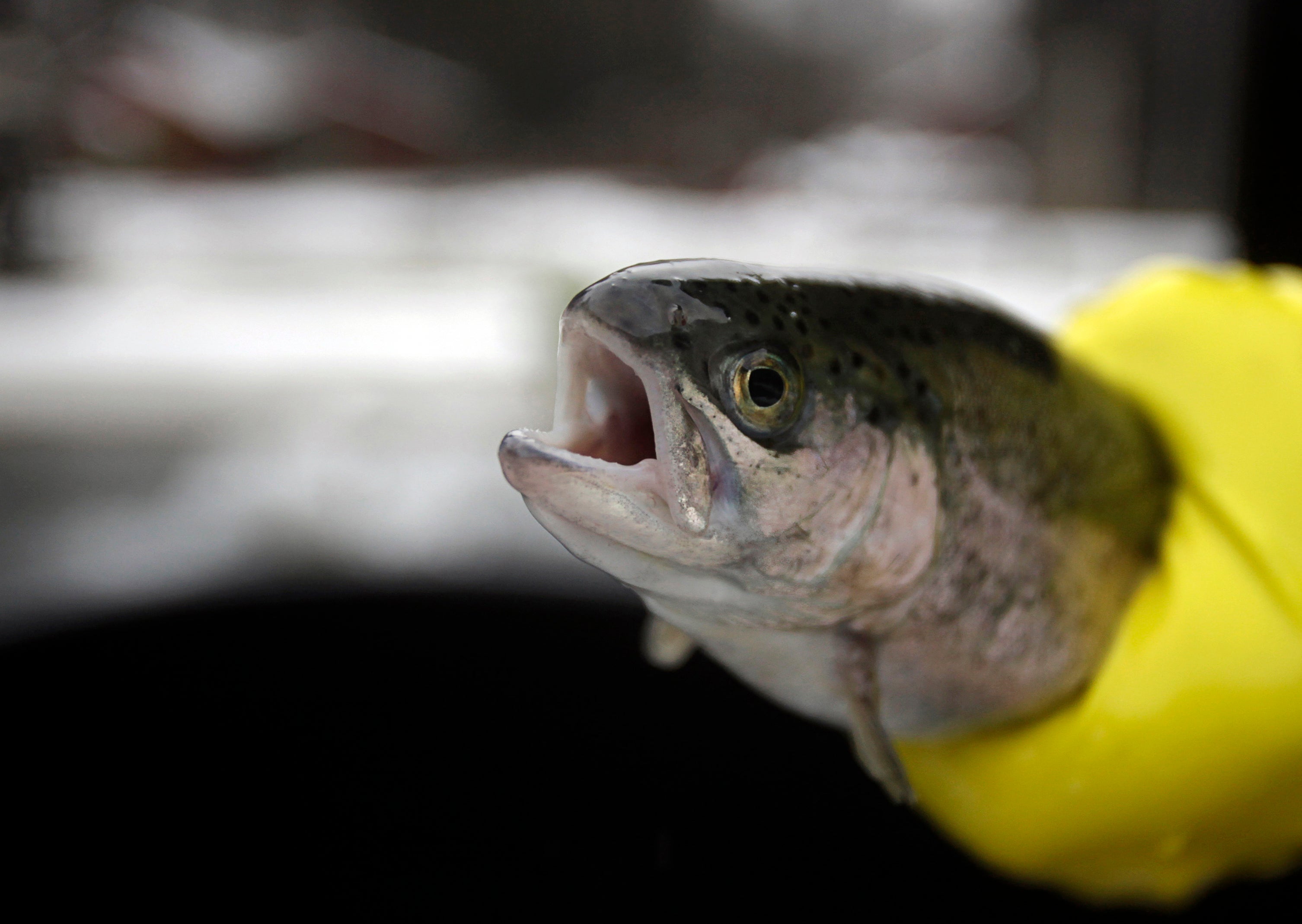Some fish feel excruciating pain for up to 20 minutes after catch, scientists find
Pre-slaughter practices like fish crowding during transport may cause even greater suffering
Fish like the rainbow trout suffer 2 to 20 minutes of excruciating pain while they are harvested and killed for food, according to a new study.
The research, published in Scientific Reports, reveals the hidden pain of fish during slaughter and offers solutions to improve their welfare.
Researchers hope the findings can help improve the welfare of up to 2.2 trillion wild and 171 billion farmed fish killed every year for human consumption.
In the study, scientists focussed on a common method of slaughtering fish called air asphyxiation. Animal welfare groups have flagged this method, which involves depriving fish of oxygen, as inhumane given the significant amount of time they take to lose consciousness in this process.
Researchers found that rainbow trout endured an average of 10 minutes of intense pain during this process, with estimates ranging from 2 to 22 minutes depending on factors like fish size and water temperature.
“Based on a review of research on stress responses during asphyxiation, we estimate 10 min of moderate to intense pain per trout,” they wrote.

The study cautioned that chilling fish in ice slurry after being caught could cause an even greater burden of pain. “By slowing down metabolic processes, lower temperatures may extend the time to unconsciousness,” it noted.
Looking at other interventions, researchers found that if implemented properly, electrical stunning could avert 1 to 20 hours of moderate to extreme pain experienced by fish for every US dollar spent on slaughtering them.
Another method called percussive stunning, which involves dealing a blow to an animal’s head with special devices, could kill fish quickly without much suffering but faced “implementation challenges”, researchers said, adding that other pre-slaughter practices like fish crowding during transport might cause even greater suffering.
The study also highlights the use of the Welfare Footprint Framework, a method to quantify animal welfare by estimating the total time they spend in various states of suffering or well-being.
It uses time-based values to subjective experiences for direct comparisons between different animal welfare interventions.
"The Welfare Footprint Framework provides a rigorous and transparent evidence-based approach to measuring animal welfare and enables informed decisions about where to allocate resources for the greatest impact,” Wladimir Alonso, an author of the study, said.
“These findings provide transparent, evidence-grounded and comparable metrics to guide cost–benefit decisions and inform slaughter regulations and practices in trout.”
Join our commenting forum
Join thought-provoking conversations, follow other Independent readers and see their replies
Comments
Bookmark popover
Removed from bookmarks